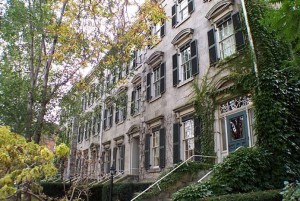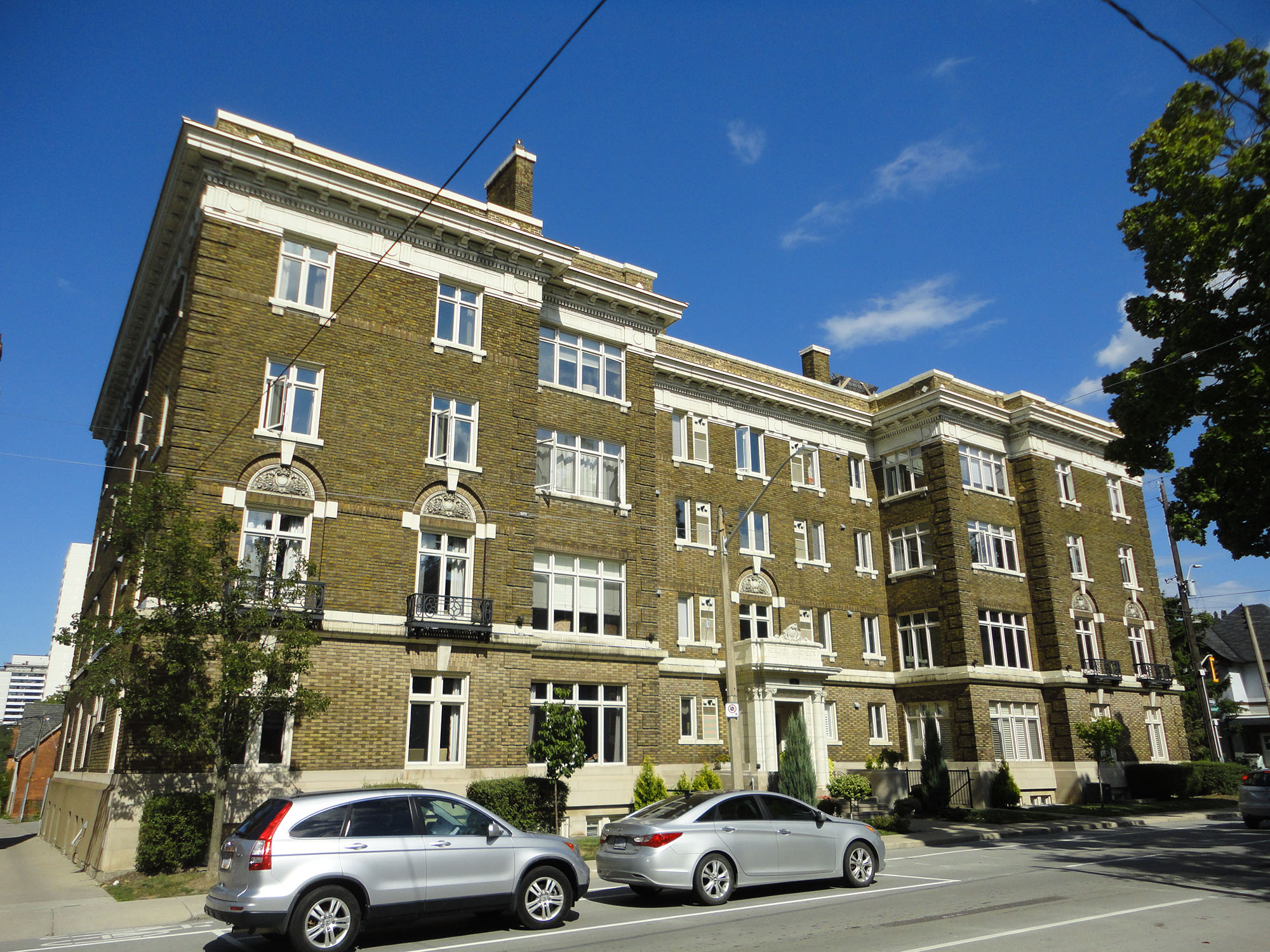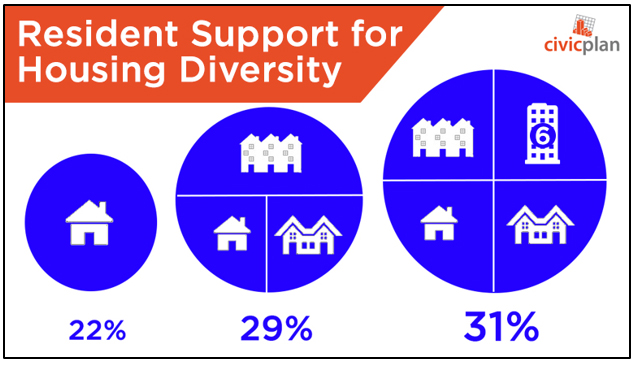The Missing Middle: A Sweet Spot of Support for Intensification?
Hamilton’s Durand neighbourhood is one of the city’s oldest, most dynamic communities. Significant change and growth is occurring in the neighbourhood, including proposed new developments tied to intensification that are eliciting a robust community dialogue on how the neighbourhood should look in the future.
As part of this dialogue, a survey conducted by Civicplan on behalf of the Durand Neighbourhood Association provides some insights into the perspectives of Duranders on neighbourhood intensification. The conclusions indicate that many local residents are interested in what is sometimes called the “missing middle” or “gentle density.”
Gentle Density
 In many Canadian communities, the perception of urban development options is often limited to one of two forms: either single detached homes or multi-floor apartment style towers. These options are the extremes and there are other options that fall in the middle under the umbrella of gentle density.
In many Canadian communities, the perception of urban development options is often limited to one of two forms: either single detached homes or multi-floor apartment style towers. These options are the extremes and there are other options that fall in the middle under the umbrella of gentle density.
Noted Canadian urbanist Brent Toderian defines gentle density as, “attached, ground-oriented housing that’s more dense than a detached house, but with a similar scale and character. Think duplexes, semi-detached homes, rowhouses, or even stacked townhouses.” These developments achieve the goal of increased population density while providing alternatives to high rise living.
This “missing middle” in the housing conversation has many advantages, not least of which is its popularity among neighbourhood residents.
Durand Neighbourhood Character Survey
Working with the Durand Neighbourhood Association, Civicplan undertook a study of neighbourhood character, or the look and feel of the area. As part of this study, Civicplan engaged residents to gain their direct feedback on a number of issues including their views on what types of buildings or structures they like, as well as the types of new development that would fit best in the neighbourhood.
The voluntary survey was completed by 174 Durand residents, including those of different ages, those who have lived in the neighbourhood for different amounts of time, as well as those who live in different types of dwellings such as detached homes or apartment towers. Specifically:
- Age: Respondents indicated they were various ages, with close to 30 percent indicated they were between the ages of 25-39, close to 40 percent indicating they were between the ages of 40-64, and close to 30 percent indicating they were over 65 years of age.
- Time living in Durand: 39 percent of respondents indicated they have lived in the Durand between 1-5 years, while 28 percent indicated they have lived in the neighbourhood for between 6-15 years, and another 17 percent indicated they’ve lived in Durand for between 16-30 years. Finally, 13 percent noted they have been in the neighbourhood for more than 30 years.
- Type of Dwelling: While 51 percent of respondents indicated they live in a single family detached home, 39 percent noted they lived in apartment style buildings, and 11 percent indicated they live in semi-detached or row/townhouse style homes in the neighbourhood.
The results provided valuable insights into the perspectives of a cross section of residents living in the neighbourhood.
Building Height
Durand is home to a wide variety of building types ranging from single family detached homes to large apartment style buildings. Respondents were asked to provide their views on the influence of various building heights on the look and feel of their street. Specifically, residents rated how existing residential building heights influence streetscape character.
- Buildings 1-3 storeys high were viewed positively or somewhat positively by 69 percent of all respondents. Only 13 percent viewed them negatively or somewhat negatively.
- Opinions of buildings 4-6 storeys high were more evenly split with 41 percent viewing them positively or somewhat positively while 37 percent viewing them as negative or somewhat negative. 22 percent were neutral on the question.
- Buildings of seven or more storeys were viewed less favourably. Over half of respondents (54%), indicated that this building form had a negative or somewhat negative influence on the streetscape. Only 29 percent had a positive or somewhat positive view.
Over 40 / Under 40
Different perspectives on building height were evident based on age. To demonstrate this, responses were divided into 2 groups: respondents over and under 40 years old.
Respondents under 40 indicated that increased height had a less positive influence on the street than did their counterparts over 40 years old. However, positive views of more gentle density tended to be about the same level across age groups.
Future Development
Duranders were also asked what type of new development would fit well on their street. Respondents could choose from various types of development when answering, including single family detached homes, semi-detached homes, row/town houses, apartment style (six storeys or below, or seven storeys and above).
Of respondents who selected only one type of housing for their street, single family detached was the most popular, representing 22 percent of all responses. However, more respondents indicated support for a diversity of forms of gentle and medium scale density.
For example, respondents selecting one or more of: Semi-detached, row/townhouse, along with single family detached represented 29 percent of all responses. Those that selected apartment style (6 storeys or less) alone, or along with semi-detached, row/townhouse, single family detached represented the largest segment of responses at 31 percent. Together, these last two sets of responses demonstrate that 60 percent of responses indicated support for a diversity of new development along the lines of gentle density and medium scale intensification. Additionally, when viewing responses that selected apartment style buildings 7 storeys or greater on their own, or with any other option, support drops off significantly with only 8 percent of respondents choosing or including this higher level of intensification. On the other side of the spectrum, only 4 percent of respondents indicated that they would like to see no new development in the neighbourhood. A final 4 percent indicated other responses.
Conclusions
The outcome of Civicplan’s engagement indicates that Durand residents surveyed are in favour of increased density, but support a particular type of intensification on their streets. More specifically, gentle density and medium scale development. These results indicate that perhaps respondents consider these levels of density to be an appropriate way to develop the Durand neighbourhood in the future. The perspectives of neighbourhood residents can help inform future new development in the community, as well as helping the City to achieve its intensification goals.
Further, it is important to consider that neighbourhood intensification could be achieved through multiple gentle density and/or medium scale projects as opposed to fewer high-rise developments. Finally, Durand is not a uniform neighbourhood and certain streets are more appropriate for larger scale development. These differences across Durand, along with resident feedback, should help shape neighbourhood planning moving forward.



